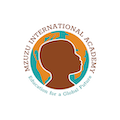Education Insights:May 2023.
It is May already! As we move towards the end of the year, how we assess pupils’ progress comes to mind. Let us take a look at this in more detail. 
Most of us, of a certain age, will remember our final years in secondary school or university and associate it with tests and examinations that were marked outside of school and resulted in recognised qualifications (or not), making us fit for the world of work, or further education.
Assessment of this type is known as Summative assessment (Assessment of Learning) and there have been many educational debates as to its overall effectiveness. The introduction of course work and practical examinations improved the model, but it is still used in the majority of secondary and tertiary educational systems around the world.
In international schools, the preferred method of assessing progress in Primary/Elementary schools is a process known as Formative assessment or Assessment for Learning (AfL). This is a continuous process of assessment, conducted by the teacher (and student) whilst teaching is taking place. AfL in primary schools concentrates on ‘where the learner is going,’ ‘where the learner is now’ and ‘how the learner can get there.’ The number of Summative tests is reduced, and the emphasis is on target setting, evaluation, and feedback. Teachers will ensure that children are aware of the Learning objective(s) of a lesson and the success criteria necessary to attain them. Success criteria are often talked about before teaching actually takes place. Your children will know them as LO and SC or WALT and WILF... (We are Learning to) and (What I am Looking for.) These are written on the board before the start of each lesson.
This is why we often refer to the end of term tests as assessments rather than examinations or tests.
 They are a valuable tool for teachers to evaluate progress but not essential for the pupils to move on to the next phase. They function as the basis for future planning and allow feedback to parents and pupils alike.
They are a valuable tool for teachers to evaluate progress but not essential for the pupils to move on to the next phase. They function as the basis for future planning and allow feedback to parents and pupils alike.
AfL allows learners to understand exactly what they have to do in order to succeed, encourage active classroom discussion, provide sufficient thinking time, feedback, and the opportunity to act on that feedback. AfL also works very well with older students, encouraging them to take responsibility for their own learning and teaching self-assessment as tool.
Both assessment for learning and assessment of learning are valuable in education but we must be aware of their different purposes.
(Photos – Chameleon hatchling and reed frog)





